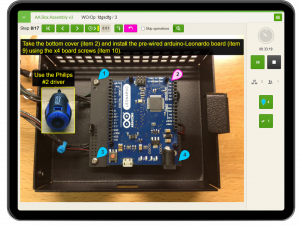As businesses grow and evolve, managing products from conception to disposal becomes an increasingly complex process. This is where Product Lifecycle Management (PLM) systems come in, offering an integrated approach to manage this journey. Understanding the significance of PLM and knowing how to choose and implement one effectively can give your business a competitive edge.
Understanding the Importance of PLM Systems
1. Enhanced Productivity: PLM systems centralize product data, thus eliminating the need for manual data entry and reducing errors. It promotes efficiency by streamlining processes and enhancing team collaboration.
2. Reduced Time-to-Market: With a PLM system, businesses can reduce their product development cycles, allowing faster time-to-market. The sooner you introduce your product, the faster you can realize its profits.
3. Improved Quality Control: PLM systems help businesses maintain product quality by keeping a record of product issues, tracking changes, and making sure only approved modifications are implemented.
4. Regulatory Compliance: PLM can assist with maintaining compliance by providing comprehensive documentation and traceability.
Now, let’s dive into how to select and implement a PLM system effectively.
Selecting the Perfect PLM System
1. Define Your Needs: Just like with any other business tool, understanding what you need from a PLM system is the first step. Consider factors like the size of your business, the industry you’re in, and your product complexity.
2. Scalability: Your PLM system should be capable of adapting to your changing business needs. Ensure that it can handle increasing data volumes and can be upgraded with additional features if necessary.
3. User-Friendliness: An intuitive and user-friendly interface will encourage system use. The easier it is for your team to use the system, the more likely they are to adopt it.
4. Vendor Reputation: Opt for a vendor with a strong track record of successful PLM implementations. They should offer excellent customer support, including training and post-implementation services.
Implementing the PLM System Effectively
1. Develop a Clear Implementation Strategy: Lay out your goals, timelines, and budget. This strategy should include an action plan with roles and responsibilities clearly defined.
2. Ensure Data Migration is Handled Correctly: Data is the backbone of any PLM system. Plan your data migration carefully to prevent data loss and ensure data integrity.
3. Provide Comprehensive Training: Training is critical for user adoption. Make sure that users are familiar with the system, understand its benefits, and know how to use it effectively.
4. Adopt a Phased Approach: Instead of a big bang approach, a phased implementation can reduce risks. Start with basic features and then gradually add more complex functionalities.
5. Regularly Review and Update Your PLM Strategy: The implementation of a PLM system isn’t a one-and-done task. It should be regularly reviewed and updated to align with changing business objectives.
In conclusion, a well-chosen and effectively implemented PLM system can be a game-changer for businesses, fostering innovation, efficiency, and profitability. By considering the above factors during selection and implementation, businesses can reap the maximum benefits of a PLM system.



